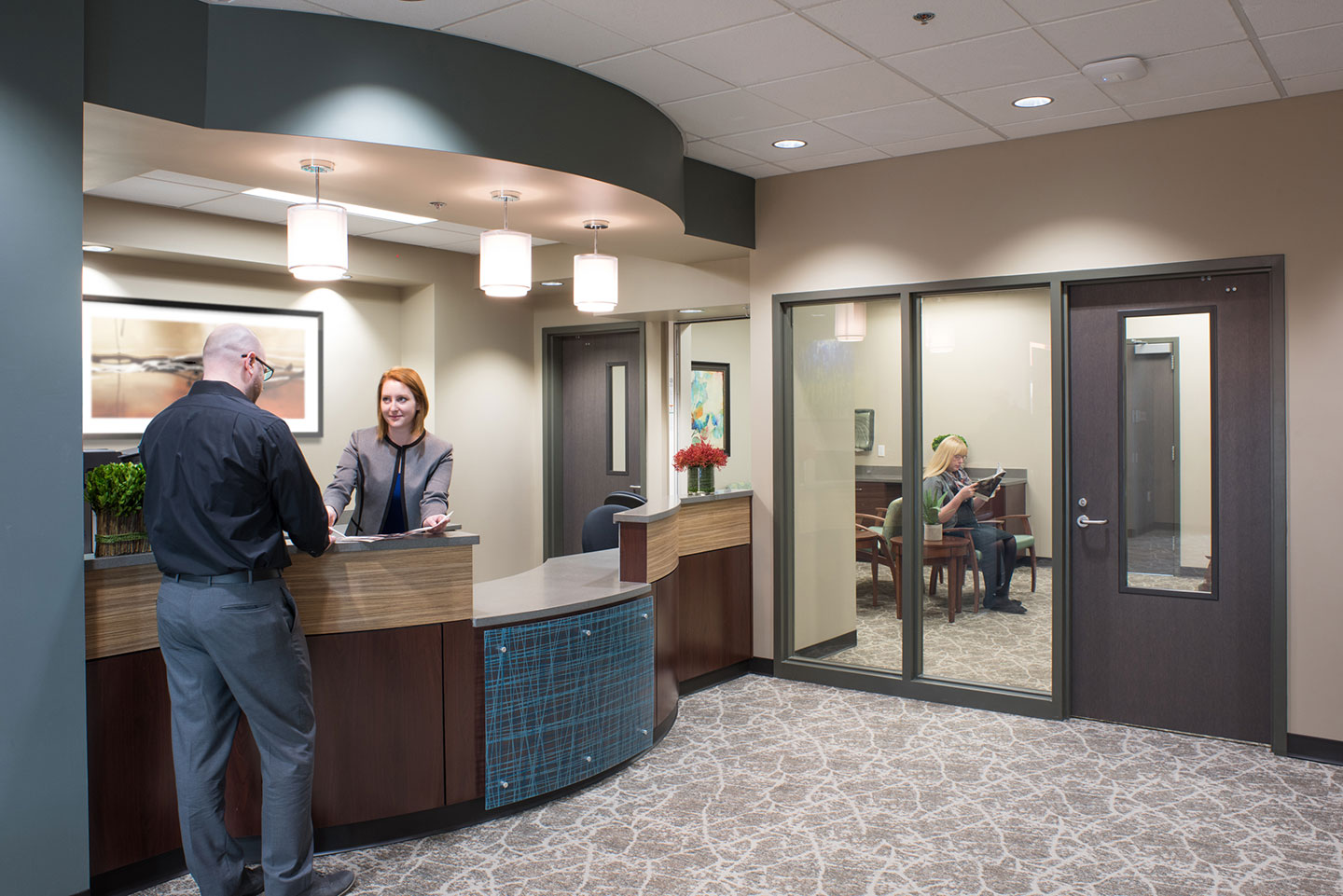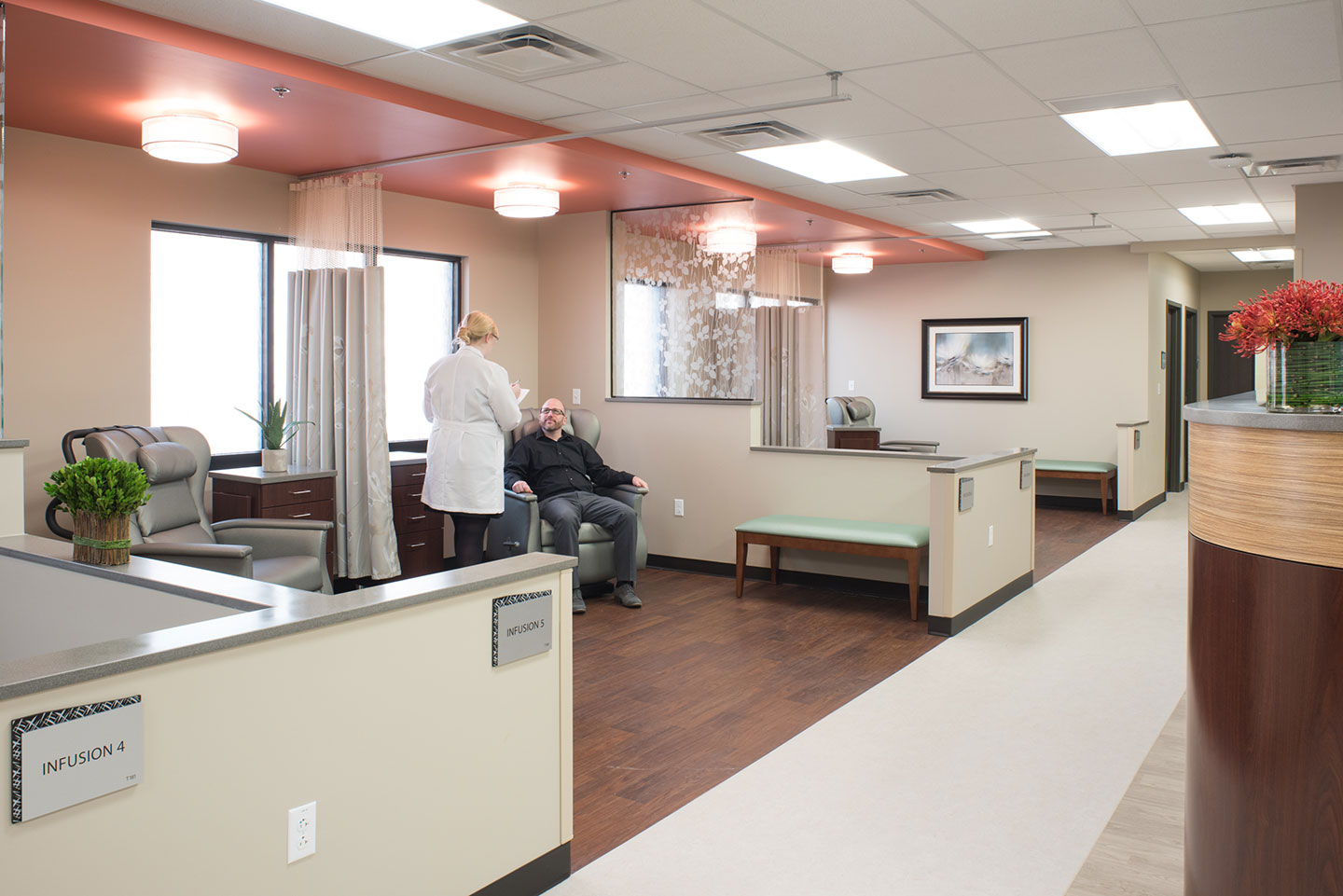Learn more about outpatient facilities and business healthcare in this short podcast with Alex Harwell:
Business healthcare: the ubiquitous medical office building in its many forms as imaging center, specialty care facility, and so many others. Whether a stand-alone facility or attached to a hospital, business-based healthcare can be a challenge
to navigate from the construction and design perspective, a difficult prospect to manage from the facility engineer’s perspective, and a very popular platform for leadership and patients. I hope to help shed some light on why business-based
care is so important, the types of classifications and their application, and the relationships between clinical and financial aspects to the buildings themselves.
What is Business Healthcare?
From a patient perspective, outpatient facilities often combine a trusted healthcare name with easy parking, clean and new facilities, a shorter drive, and a higher likelihood of insurance and Medicare/Medicaid acceptance.
From a hospital system leadership perspective, these facilities offer attractive reimbursement rates with competitively low construction and operational costs, faster speed to market, and more flexibility in divesting and acquisition than their hospital-based
counterparts.
From a facility engineering management viewpoint, depending on the relationship of responsibility, outpatient care facilities can present a management challenge with respect to tenant relationships, data accessibility, clinical services creep, remote
troubleshooting, and leased equipment and structures.
And finally, from the designer’s and regulator’s perspectives, the facilities can be difficult to right-design, correctly matching up clinical, reimbursement, and operational catalysts with the appropriate systems designs and compliance structures.
Unlike hospital design where the regulatory requirements and appropriate design levels for services are relatively straightforward, well documented, and well enforced, in the outpatient setting, the application of these same standards can be murky
and ambiguous.

Diligence in understanding the patient care environment and applying appropriate categorizations and their associated features will help better prepare facility operators and owners to safely serve communities for decades to come. ”
Alex Harwell
Capital and Operational Savings
Of course a major factor to any facility owner is cost. With outpatient facilities, the operational savings have the potential to be quite high. Based on data we’ve collected from our own projects, CostWorks, Centers for Medicare and Medicaid Services
(CMS) historical data, and local hospital publicized provider data, outpatient facility owners may see a 30% capital outlay savings and 50% operational budget savings compared to equivalent services based within a hospital setting. These savings come
largely from the lower overall cost of construction and materials in simpler structures. Additionally, under the current reimbursement systems through private insurers, CMS Outpatient Prospective Payment System (OPPS), and licensed Ambulatory Surgical
Center (ASC) payment programs, the same services administered in a hospital-provider-based outpatient setting may net just 10% less than if it were in a hospital setting.

Classification Catalysts and Codes/Standards
Walking the line between protecting the relative cost savings of outpatient care, and providing sufficient and compliant facilities, the designer is tasked with determining the correct application of outpatient care codes, standards, and guidelines. As
mentioned previously, this is not always a clear and straightforward process. Determining which codes and standards are applicable in each design requires a solid understanding of the care environment beyond the occupancy classification alone. These
may include system and equipment failure risks to occupants, patient admission status and classification, reimbursement status and source, self-preservation capabilities, floors and building size, anesthesia and sedation, special procedures, and hours
of operation. Various codes and standards could include International Building Code (IBC) Business Occupancy Classifications; IBC 422, Ambulatory Care Classification; National Fire Protection Association (NFPA) 101, Ambulatory Health Care; NFPA 99,
Health Care Facilities Code; NFPA 70, National Electrical Code Article 517; Facility Guidelines Institute (FGI) Outpatient Guidelines; as well as CMS accreditation organizations.
The outpatient environment does present a tangible risk as patient care continues to expand into business occupancies not necessarily equipped to mitigate hazards. However, diligence in understanding the patient care environment and applying appropriate
categorizations and their associated features will help better prepare facility operators and owners to safely serve communities for decades to come.